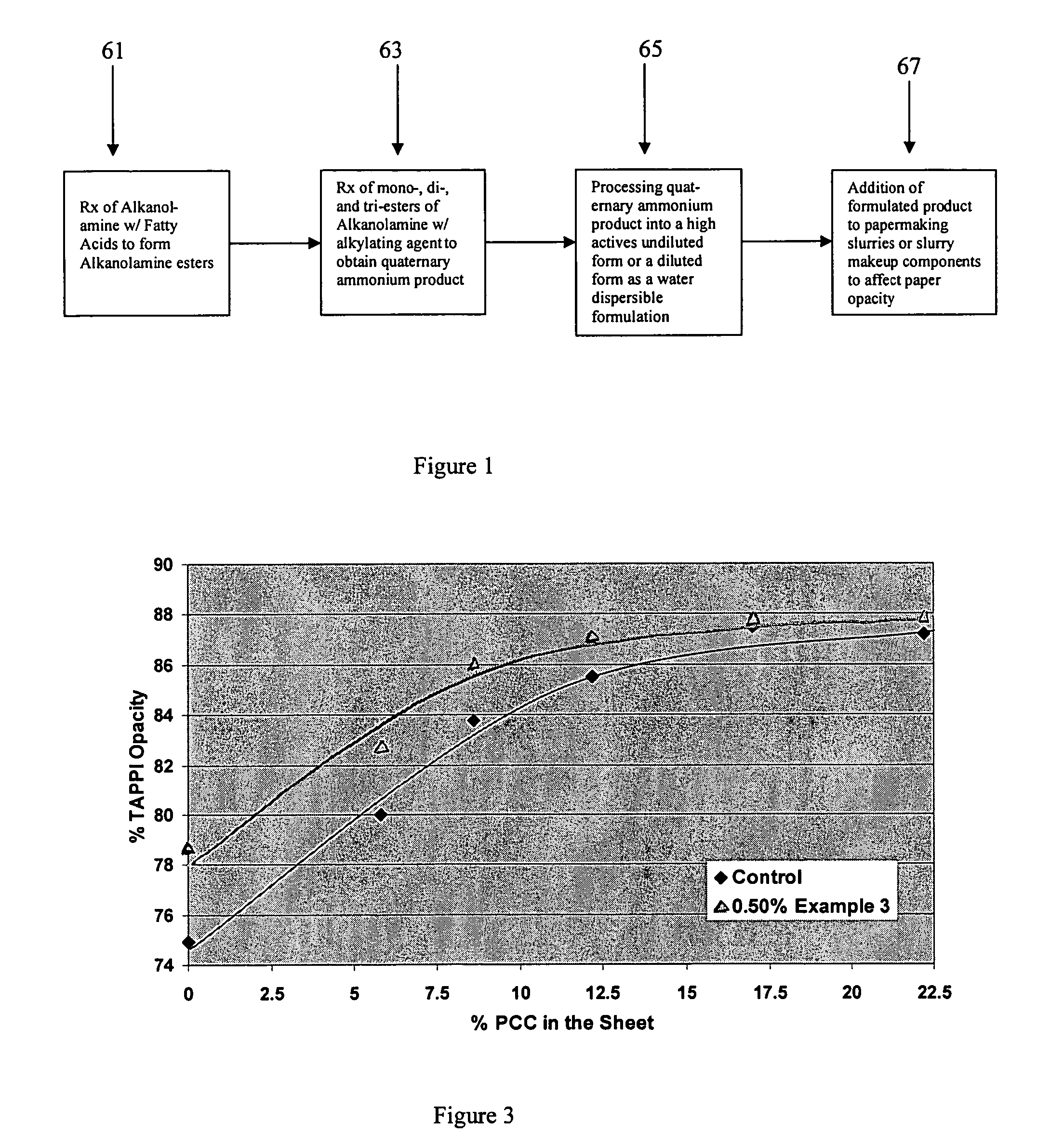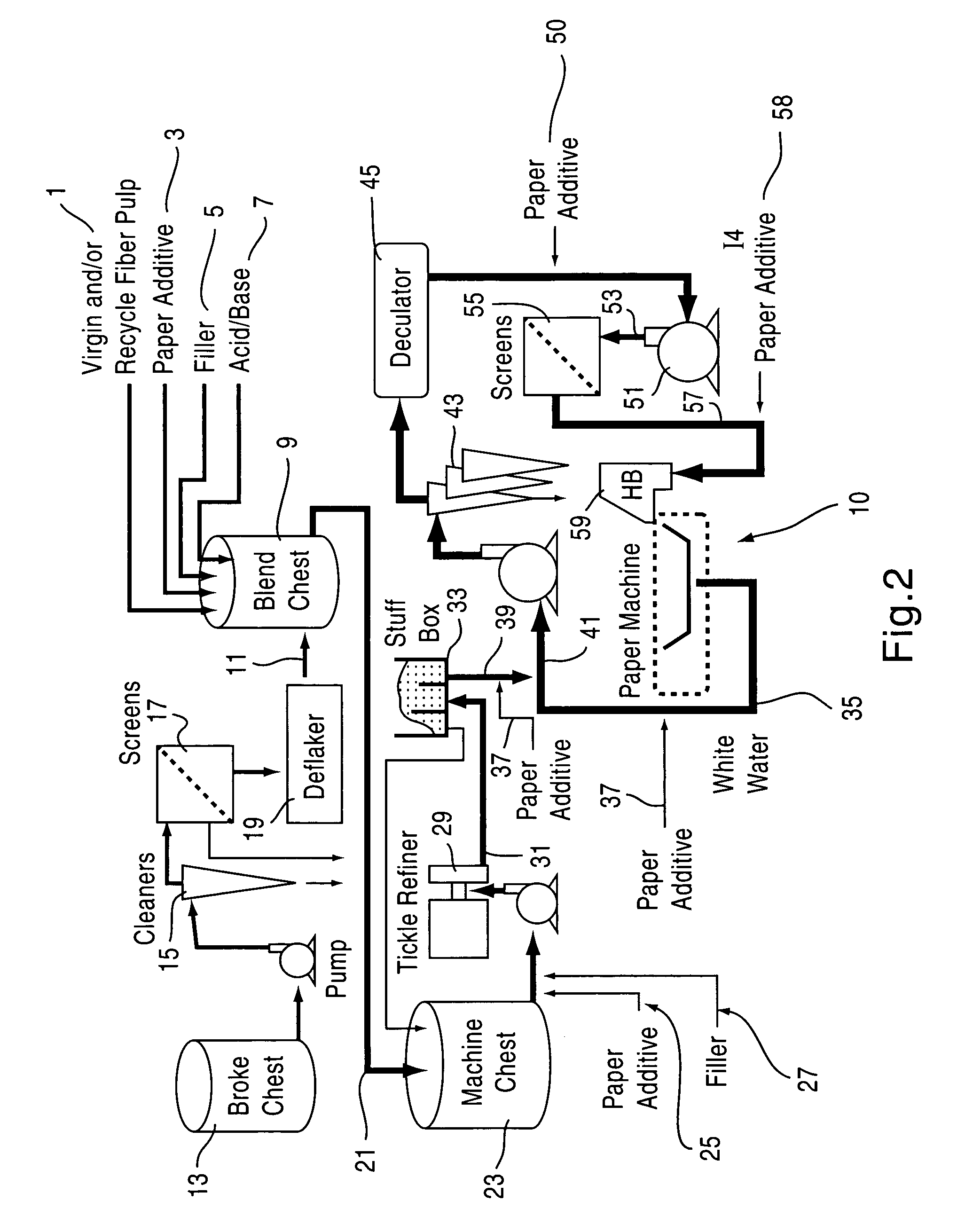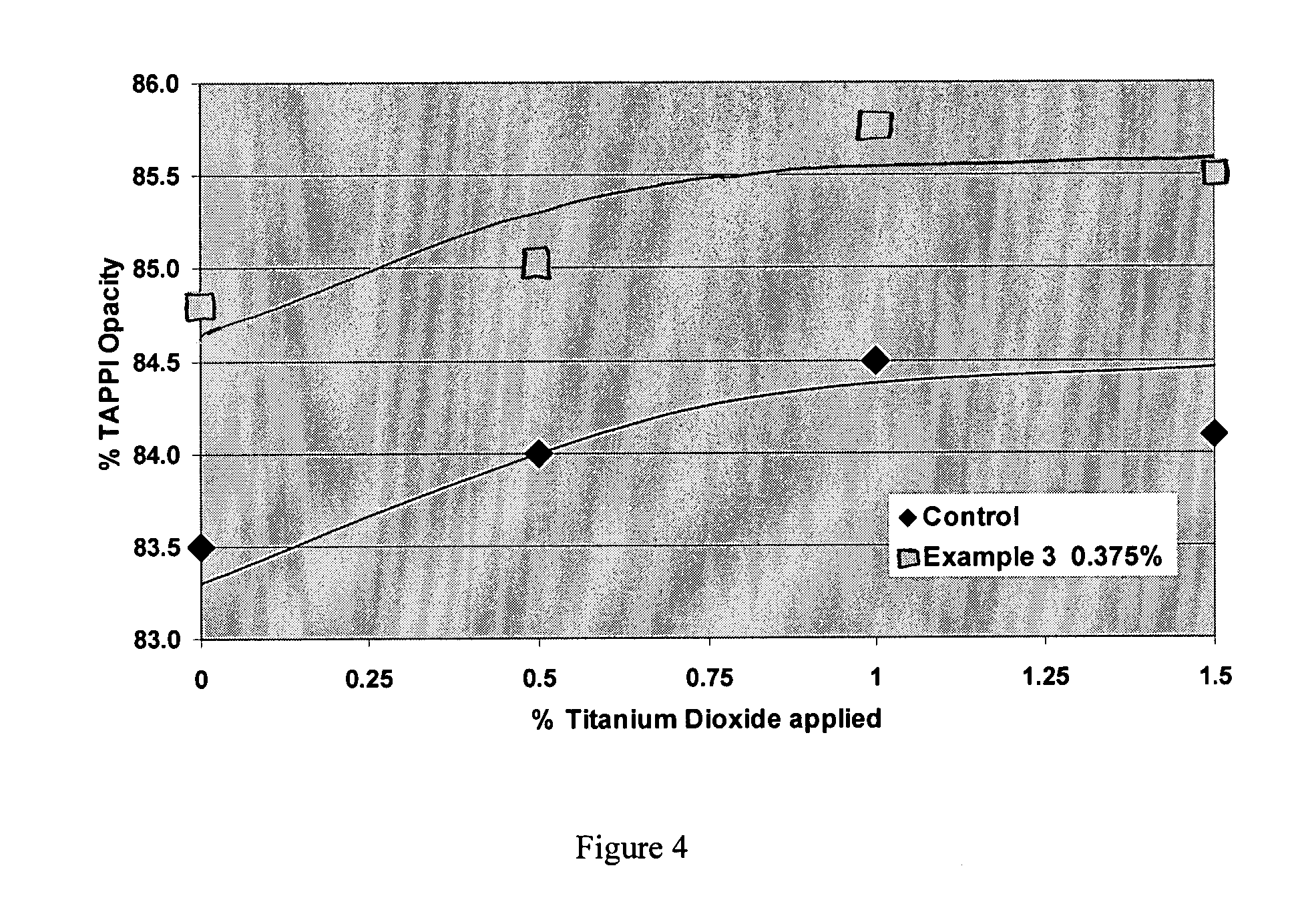Papermaking method using one or more quaternized dialkanolamine fatty acid ester compounds to control opacity and paper product made thereby
a technology of quaternized dialkanolamine and ester compounds, which is applied in papermaking, non-fibrous pulp addition, transportation and packaging, etc., can solve the problems of increasing the basis weight of paper products, reducing the overall cost of paper or paperboard sheets with a cheaper material, and increasing the overall cost of paper products. , to achieve the effect of reducing the specific gravity of organic compounds, reducing the gram of paper or paper products, and increasing the opacity of finished
- Summary
- Abstract
- Description
- Claims
- Application Information
AI Technical Summary
Benefits of technology
Problems solved by technology
Method used
Image
Examples
example 1 -
Example 1-PA
Synthesis of Mono- & Disteramides of AEEA
[0100]Samples of the mono- and disteramides of aminoethylethanol amine (AEEA) were prepared by reacting stearic acid with AEEA, and forming the 11% solids aqueous emulsion as disclosed in U.S. Pat. No. 5,296,024.
[0101]
example 2 -
Example 2-PA
Synthesis 2TOFA / TEA
[0102]To a round bottom flask was added 164.4 grams of a tall oil fatty acid (TOFA)(acid number 172 mg of KOH / g; Iodine value ˜70 gI / 100 g), 45.4 g of triethanolamine (TEA), and 0.2 g of hydrated monobutyltin oxide. The contents were heated to ˜155° C. with a nitrogen sparge, mixed and allowed to react at temperature until the acid value of the reaction product dropped below 4.8. The finished product was a dark amber liquid at room temperature.
[0103]
example 3 -
Example 3-INV
Synthesis of Me Quat 2TOFA / TEA (Methyl Sulfate Salt)
[0104]To a round bottom flask was added 200 grams 2tall oil fatty acid (2TOFA) / TEA. The contents were heated to ˜70° C. and sparged with nitrogen gas. To the heated material was added 32 grams of dimethyl sulfate (DMS) with stirring. The DMS was slowly dripped into the 2TOFA / TEA over 1 hour period. The temperature of the reaction was allowed to climb to 85 to 90° C. during the DMS addition. After all the DMS was added, the reaction was allowed to mix at 85 to 90° C. for an additional 1 hour. After this post 1 hour reaction time, the finished sample was allowed to cool. The formed compounds were mid- to dark amber color and appeared very viscous but not to the point of being a paste.
[0105]
PUM
| Property | Measurement | Unit |
|---|---|---|
| melting points | aaaaa | aaaaa |
| temperatures | aaaaa | aaaaa |
| molar ratio | aaaaa | aaaaa |
Abstract
Description
Claims
Application Information
 Login to View More
Login to View More - R&D
- Intellectual Property
- Life Sciences
- Materials
- Tech Scout
- Unparalleled Data Quality
- Higher Quality Content
- 60% Fewer Hallucinations
Browse by: Latest US Patents, China's latest patents, Technical Efficacy Thesaurus, Application Domain, Technology Topic, Popular Technical Reports.
© 2025 PatSnap. All rights reserved.Legal|Privacy policy|Modern Slavery Act Transparency Statement|Sitemap|About US| Contact US: help@patsnap.com



